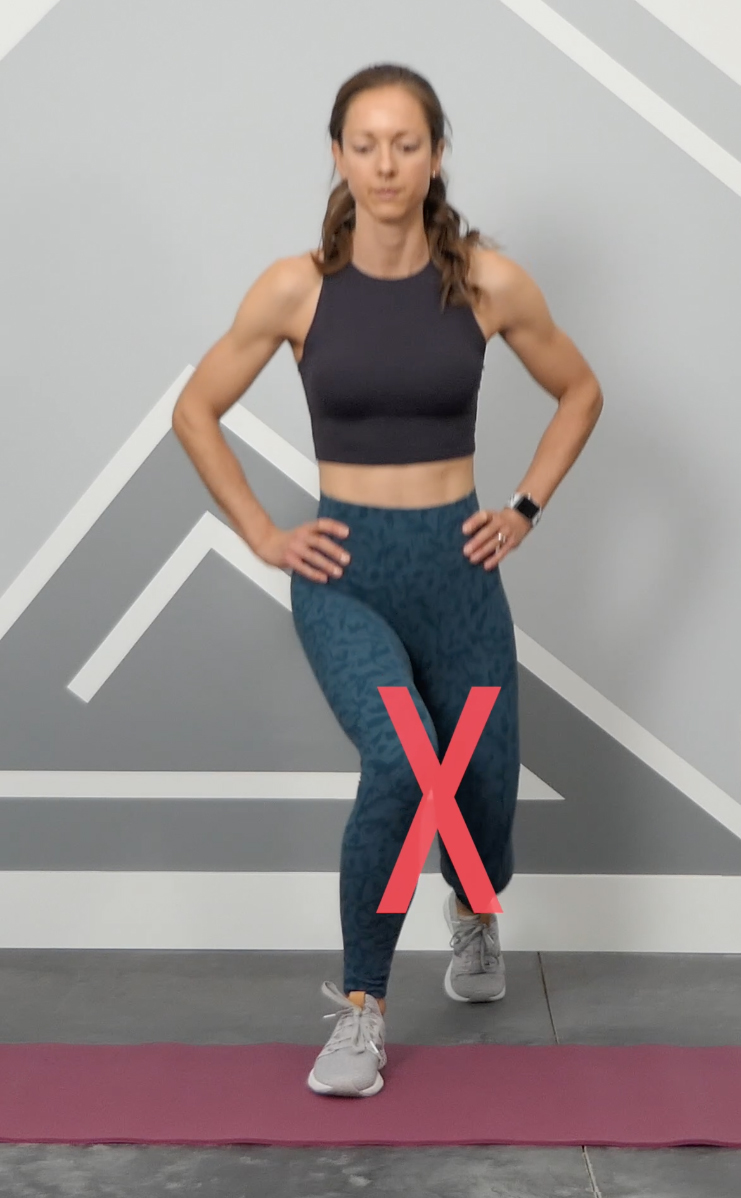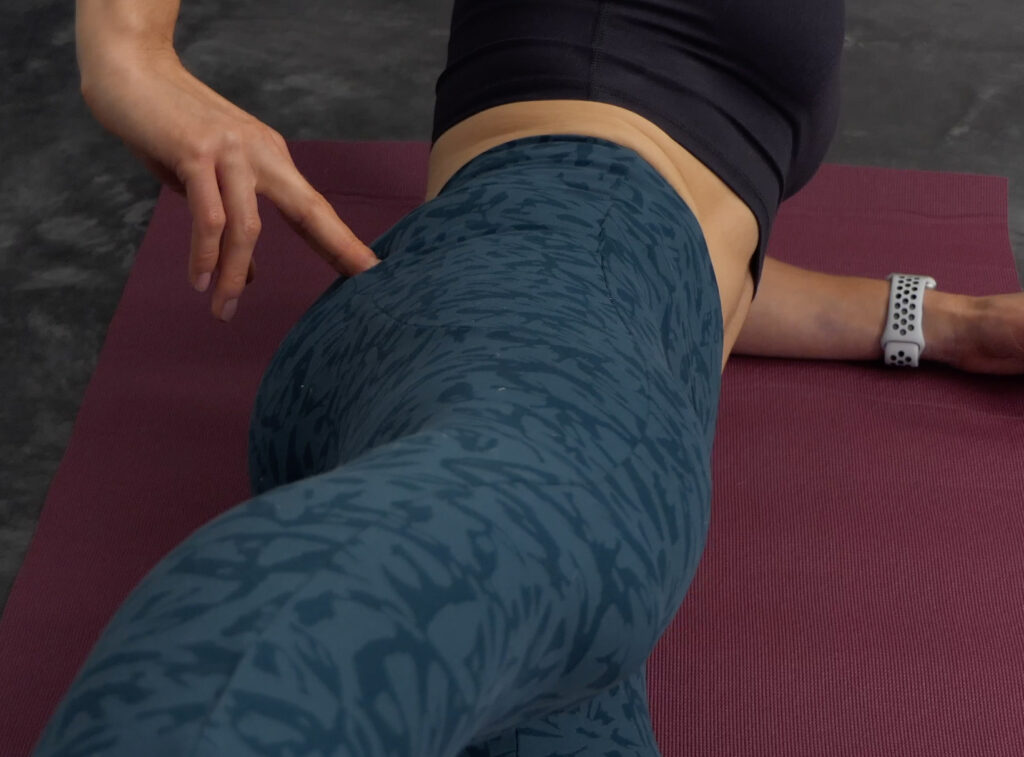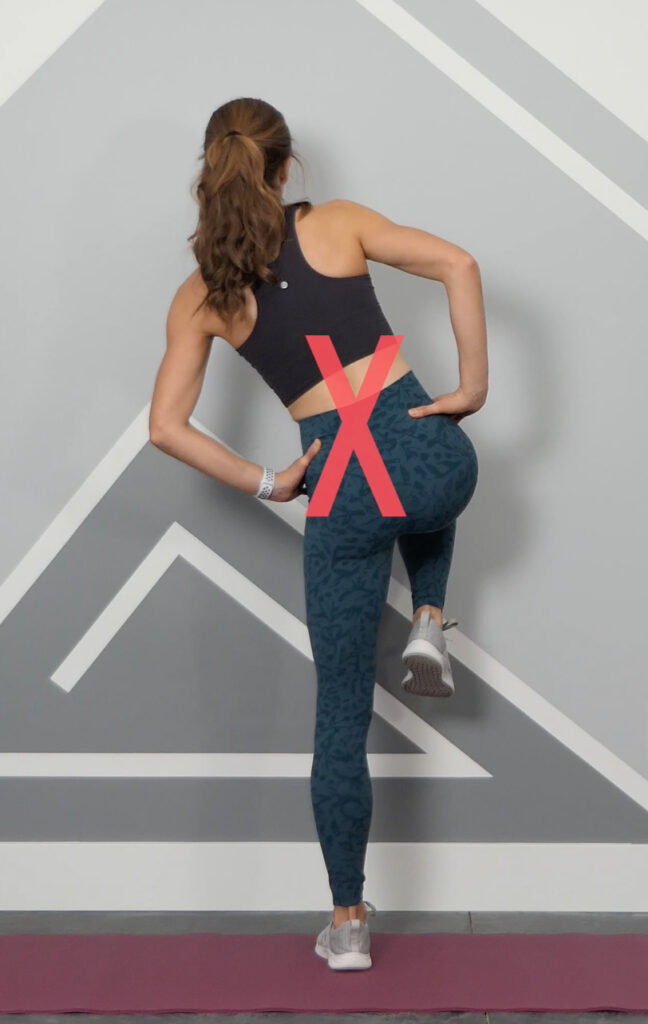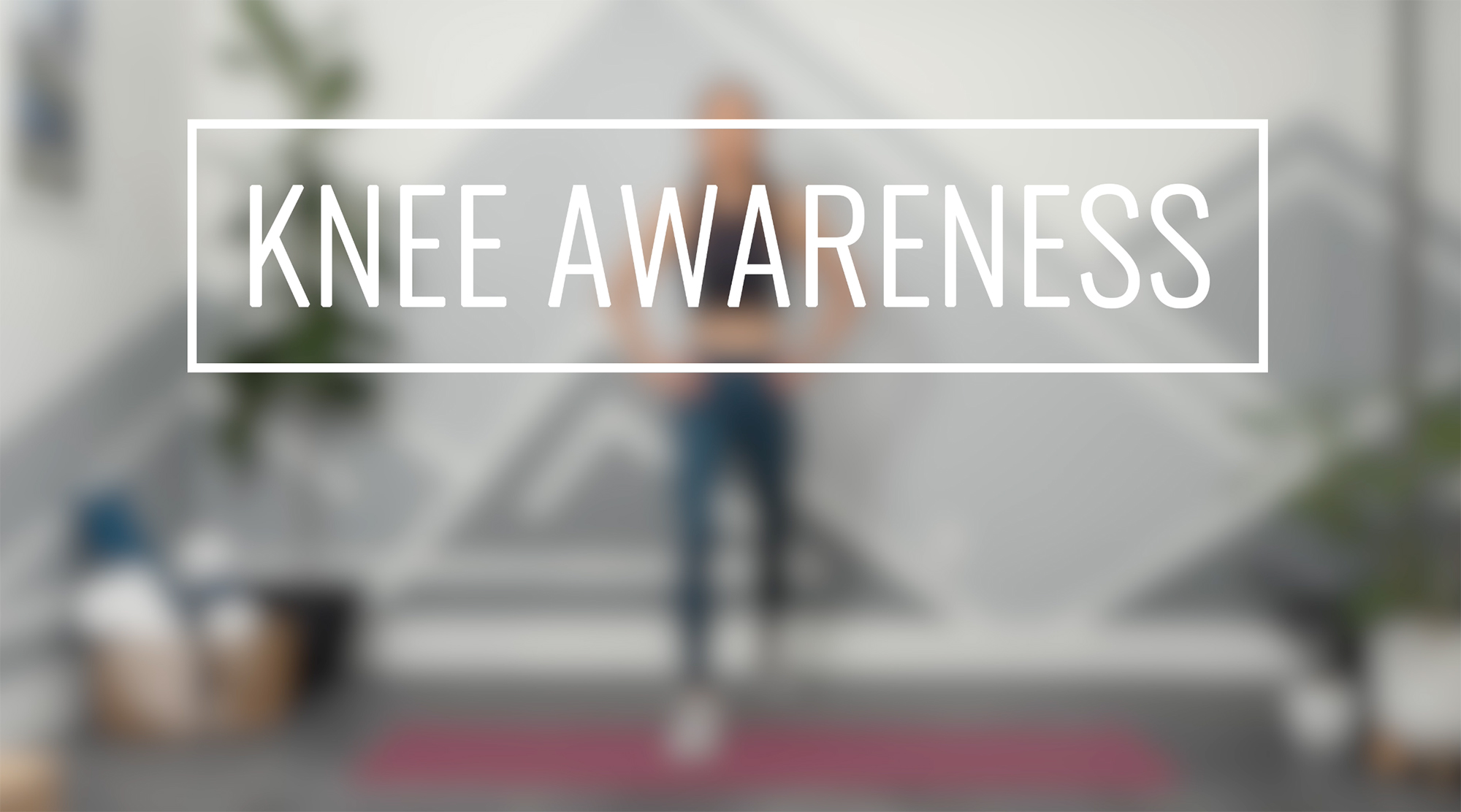
Are YOU making this common exercise mistake?
You might not even realize that you are!
It may seem insignificant, however the positioning of your knee actually has a HUGE significance on your knee health and function; additionally it can be an indication of muscle weakness in the hip girdle.
Knee awareness
It’s important to pay attention to your knee movement and position during lower-body resistance training exercises (lunges, squats, step-downs, etc) and with seemingly simple and automatic tasks like walking up or down stairs. Your body is very adaptable, so you need to recognize and train proper form and movement patterns in order to have correct body mechanics and prevent pain and/or injury while on the trail.
Your knee should track over the middle of the foot (2nd/3rd toe region). If you notice that your knee “caves in” during exercises, this can be a sign of a weak gluteus medius muscle.
gluteus medius muscle
The gluteus medius muscle (located on the outside of your buttock/hip region) plays a vital role in stabilizing the hip and providing proper tracking of the knee. When this muscle is weak it causes the knee to track inward, which creates excessive stress on the knee joint. Activating and strengthening the gluteus medius muscle can help restore proper movement of the knee and reduce or eliminate knee pain.
Even if you don’t experience knee pain with exercise or hiking, it’s still important to train this muscle to prevent future issues from arising.


Proper knee tracking reduces stress on the knee joints —
which results in less wear-and-tear action & reduces associated knee pain.
Take action — your knees will thank you!
It takes both conscious awareness and physical efforts to restore and maintain proper movement patterns about the body, especially when muscles are fatigued or weak.
- Watch for your knee(s) “caving in” during exercise. If you notice this happening, you’ll want to take corrective action during that movement so as not to train improper form. NOTE: When utilizing proper form, the exercise may initially seem harder, but that’s the point — you are working to strengthen the weak muscle.
- Don’t compromise form to achieve more reps. STOP the exercise anytime that you notice proper form deteriorating. Doing more squats with bad form will do more harm than good.
- Do you need help learning and mastering proper form? Work with a certified personal trainer at your local gym, or enroll in my HIKE-ABILITY Training Program to get full access to an extensive, instructional video library of exercises that include helpful cues, tips, and options to modify/progress any exercises to meet your current level of fitness.
- Don’t compromise form to achieve more reps. STOP the exercise anytime that you notice proper form deteriorating. Doing more squats with bad form will do more harm than good.
- Start by regularly performing specific exercises, like the Clamshell or Leg Lifts (pictured above) to isolate and activate the gluteus medius muscle. Then, incorporate additional exercises to strengthen all of the muscles that surround the knee joint to further stabilize the joint and protect it from pain and/or injury.
- If you’re interested in fully “trail-proofing” your knees and want to know which exercises activate and strengthen all the muscles you rely on for hiking, enroll in my HIKE-ABILITY Training Program.
Self-assessments:
Walking Lunge Test: (Evaluation of knee alignment during motion.)
Watch your knee alignment as you lower into the lunge position and as you push up to standing. Does your knee “cave/track in”? Also, pay attention to any imbalance/asymmetry from side to side.
Trendelenburg Test: (Evaluation of hip girdle stability/gluteus medius weakness.)
Perform this in front of a mirror, or ask somebody to watch or video you from behind.
Stand feet hip-width apart. Transfer weight to left leg and raise the right knee up to bring the right foot off the ground. Notice the position of your hips relative to each other and note any leaning of your torso. (Repeat the test on the other side.)



Share in the comments below the results of your self-assessments, and if you found this information helpful as you go about your training for this hiking season. Also be sure to sign up for my Hiking Fitness Newsletter, and check out my other blog articles relating to this topic The Importance of Strength Training, Restoring Proper Muscle Activation, and PAIN… a “Four-letter Word” that Doesn’t Belong on the Trail.
Adventure awaits… be ready for it!
Kristen, CPT and creator of the HIKE-ABILITY Training Program

Disclaimer: All information, content, and material (including associated text, videos, and links) on this website is provided in good faith and is for informational and educational purposes only. It is not intended to serve as a substitute for the consultation, diagnosis, and/or medical treatment of a qualified physician or healthcare provider. All exercise has inherent risks. Before beginning any type of exercise, please consult your health care provider.





Leave a Reply